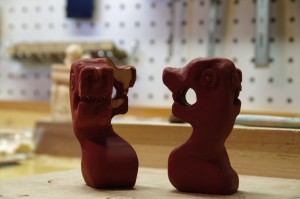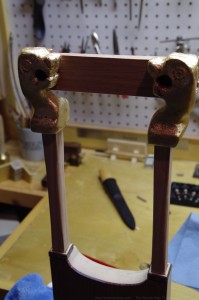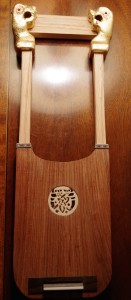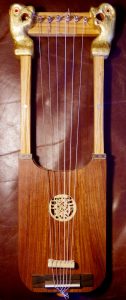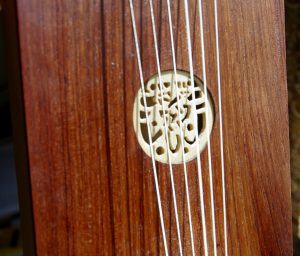Last day on the lyre. Zither pins go in when I decide on 4 strings or 6. Just a few odds and ends left. (Latin camp was excellent. We went from Proto-Indo-European to Old Latin, looked at theme vowels in the various inflections and decelnsions, and tried to made sense of the various phonological categories of stem vowels. By the end of the second day, we were reading Bede’s account of Caedmon!)
First, I painted the dragon heads with a terra-cotta base in preparation for gilding.
My penurious Scots soul wouldn’t allow me to spend heavily on real gold, so I bought a cheap-o set of gilding materials from the Mona Lisa company. The glue was terrible, and the gilding is a composite, so it doesn’t act like real leaf. (I may get real leaf later.) Nevertheless, it turned out alright.
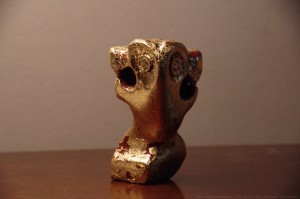
Next came the banding. I cut down strips of basswood over which I laid walnut-and-beech banding. I mitered it in a hobby miter box with a fine-toothed Japanese pull saw designed for dovetails. Glued with hide glue—very important, since it dries slowly and the miters needed readjusting quite a bit.
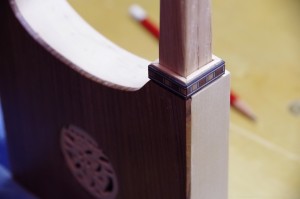
Then I fit the cross-piece into the heads with epoxy. Mighty strong glue. It’s hard to see from the picture, but the face of the cross-piece is dead center along the x-axis of the lyre. The force of the strings will pull down through the center of the heads, through the center of the posts, and onto the footrests I carved in the frame.
The strings attach to a peg. So it was time to make the peg. The guitar strings I’m using are attached by knots that are similar to a noose. So it seemed perfectly fitting to carve the Hanged God, Odin. Although the second picture is out of focus, it shows what a little linseed oil does to beautify the wood. One addition: I wrapped a copper wire twice around Odin’s neck and secured it. The strings then go under the wire, knotted at one end. It keeps them in place with room for all.
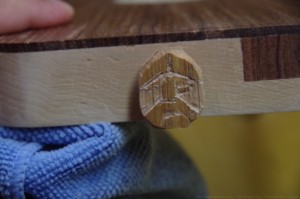
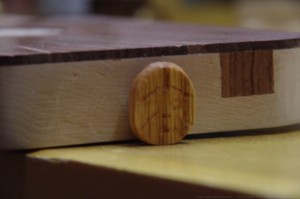
And the (almost-) finished lyre:
Here it is oiled and waxed, with mother-of-pearl inset into the supports, with the strings on. Tuned to the tonic of D with bass strings at E and A. It works with a glass slide, too.
Summer of 2016 will see a second lyre. This time, the back and front will be made from canary wood.

